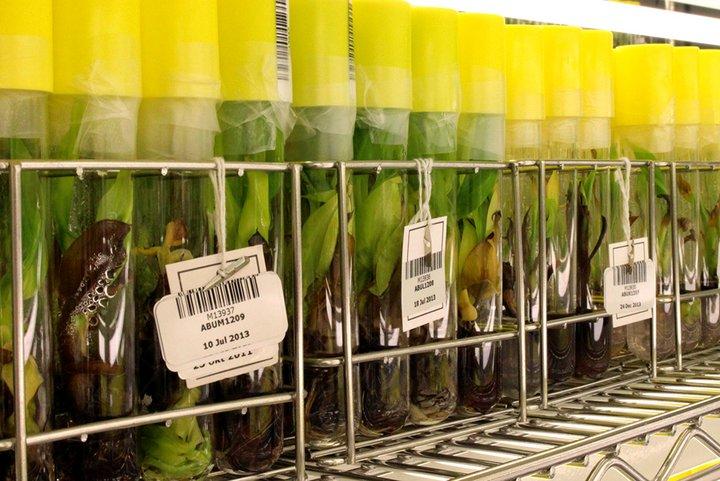New and improved Musa Germplasm Information System now available

The most comprehensive information system on banana genetic resources conserved in genebanks around the world has just launched a new and improved version.
The Musa Germplasm Information System (MGIS) is the most extensive source of documentation on banana genetic resources. It contains key information on banana germplasm diversity – such as passport data, botanical classification, morpho-taxonomic descriptors, molecular studies, plant photographs and GIS information currently on 2,281 banana accessions managed in six genebanks around the world, including the 1,456 accessions conserved in Bioversity International's global ex situ banana collection at the International Transit Centre in Leuven, Belgium.
The MGIS development team at Bioversity International and its MusaNet partners have just launched a new and improved version of MGIS. This new system properly acknowledges the many data providers on which MGIS depends on for data quality and completion.
Improvements include:
• All information on a single accession can be viewed in one page
• Taxonomic content of each collection is summarized graphically
• Insertion of diversity studies based on molecular markers
• Easier data filtering and export functions
• Users can share comments on any accession. Accessions can be requested online.
This new version was also developed with the use of open source technologies that allow management of multi-location experiments, to enhance a better integration with genomics-based data currently stored in the Banana Genome Hub and to facilitate connection with mobile devices for data capture. The website will continue to evolve in terms of features and content.
For more information, visit the MGIS website
Photo:In vitro banana collection at the Bioversity International Transit Centre, Belgium. Credit: Bioversity International/N. Roux
This story is part of the 2014 Annual Report
